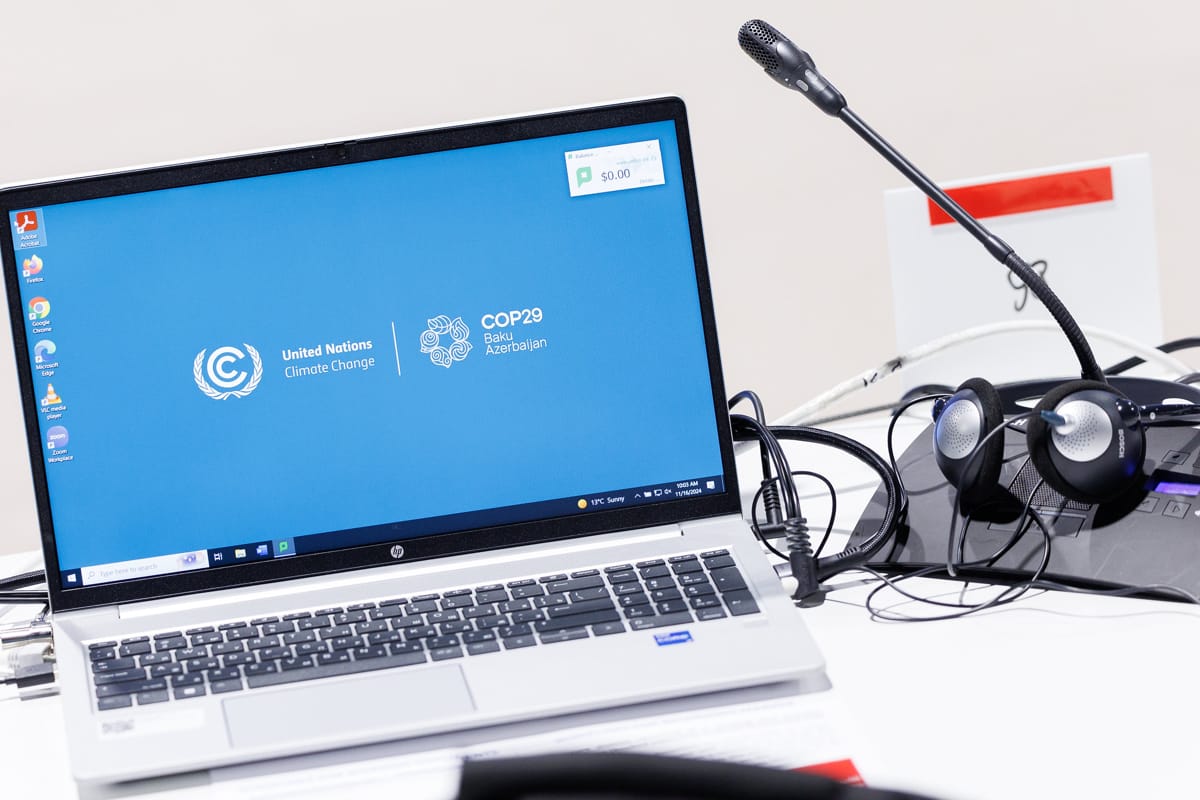South Korea’s projected US$26.5 billion floating wind farm off Ulsan City – the biggest of its kind anywhere – is the latest step in Asia’s laggardly race towards net zero.
Announced in November, the mainly European-funded project will be an important contribution to the renewables economy but the region remains way behind on its renewables targets. It needs to find around US$3 trillion between now and 2030 to have a chance of catching up, according to a wide variety of expert sources.
To put it bluntly, official emission targets are pie in the sky. And, if anything, the situation in the Pacific is worse despite the expenditure of many millions.
As the latest COP progresses in the oil state of Azerbeijan, there are however suggestions that Southeast Asia’s progress towards renewably-powered economies stands to benefit. UK’s New Energy Institute believes it is neglected: “The international community should encourage Asian and South-east Asian countries to bid for future events. Regional powerhouse cities such as Shanghai, Hong Kong, Kuala Lumpur, Hanoi or Bangkok would bring new flavours into the mix.” (Australia is in the running for 2026 and, in step in the right direction, the International Energy Agency last month opened an office in Singapore, its first-ever outside its Paris headquarters.)
Currently Southeast Asia invests about 80 cents in clean energy for every dollar spent on fossil fuels.
The main problem in Southeast Asia is its voracious appetite for energy, second only to India. Up to 2010 the region accounted for 11 per cent of the global increase in energy demand, but the IEA expects that to more than double to 25 per cent by 2035, according to its latest projections. “And by mid-century, energy demand in Southeast Asia overtakes that of the European Union,” the agency adds.
The sticking point is that fossil fuel imports will continue to rise in tandem with economic growth and energy-related carbon dioxide emissions are on course to increase by 35 per cent between now and mid-century. Much of that demand will likely be met by coal, as it has until now. Southeast Asia’s “economic development remains very carbon intensive”, according to the IEA.
“Japan, Korea and Taiwan are all struggling to meet their emissions reduction targets as they work to decarbonise their energy systems,” points out a 2024 paper by the Oxford Institute for Energy Studies. “Failures to grow renewables in the power sector fast enough to meet end-of-decade emission targets mean that there will inevitably be recourse to LNG and even coal imports at higher volumes for longer.”
A commitment to nuclear energy could help close on emissions targets, but the situation is confused. South Korea is building new plants, Japan cannot decide whether to restart mothballed ones, and Taiwan has committed to winding them down by 2025.

At first glance the region’s official goals look virtuous enough. Eight of the ten countries in Southeast Asia have set targets to hit net-zero emissions by 2050, which will require a nearly two thirds reduction of emissions by that date. But in an increasingly tense geopolitical climate when energy security is paramount, the region still relies on the Middle East for 60 per cent of its oil imports and that’s not going to change overnight.
In the small Pacific nations where a renewably-based energy system would achieve valuable economic savings by slashing punishing costs for fossil fuels, progress is erratic. Although the World Economic Forum reported in mid-2024 that “renewable energy capacity in the Pacific has increased by 30 per cent between 2014 and 2022”, that’s from a low base and most projects lag far behind targets. A 42-megawatt, US$100 million wind farm in American Samoa due to start this year has been dropped amid animosity and legal challenges, while another nearly 20-megawatt, US$55 million windfarm in Fiji has stalled pending government investigations. The Cook Islands is way behind schedule on its project to install solar power on all 15 islands.
The cost of fuel imports remains a heavy burden in the Pacific. According to calculations by the World Economics Forum, they account for between five and 13 percent of gross domestic product for all but one of 14 islands. But when they get it right, the benefits are inarguable; Tokelau has slashed its diesel imports by 80 per cent mainly through the installation of New Zealand-funded solar plants on three atolls. Other promising projects are on the table such as the Solomon Islands’ US$242 million hydropower system on the Tina River.
Geopolitical tensions are changing the wider energy game in ways that are yet to become clear. For instance, currently half of the ships carrying clean-energy technologies such as solar panels, electric vehicles and wind turbines pass through the Strait of Malacca, the main shipping channel between the Indian and Pacific Oceans that links major Asian economies, while about 20 per cent of fossil-fuel trade is routed through the embattled Strait of Hormuz, the only sea passage from the Persian Gulf to the open ocean.
In the long run Asia is pinning much of its hope for industrial-scale energy on wind power. The Ulsan City project comprises four floating wind farms with a total capacity of 6.2 million gigawatts, which is equivalent to the energy of six nuclear reactors. That’s nearly a third of the 17 gigawatts that consultant Rystad Energy expects the region, excluding mainland China, to install by 2040.
But show us the money. Currently Southeast Asia invests about 80 cents in clean energy for every dollar spent on fossil fuels. That compares with a two to one ratio among advanced economies.

